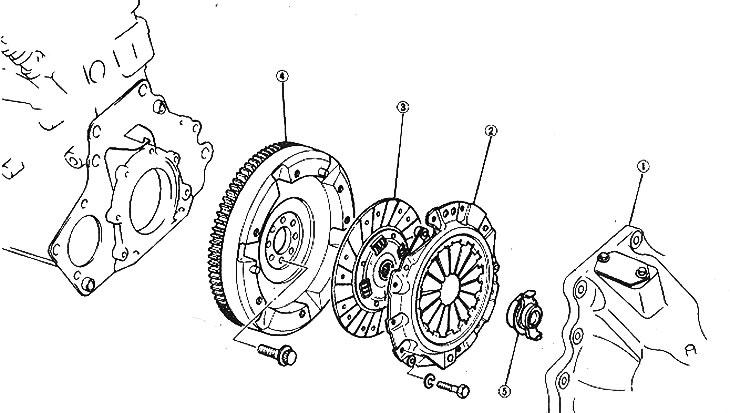
Location of clutch components
1. Transmission; 2. Clutch cover; 3. Fiction disk; 4. Flywheel; 5. Release bearing
Removing
1. Remove the transmission (Section 7).
2. Put alignment marks on the pressure plate and flywheel so that they can later be set in the same position.
3. When removing the pressure plate, hold the friction plate with a special tool or a screwdriver handle.
4. Block the flywheel ring gear and evenly loosen the pressure plate mounting bolts by turning them one turn in a diagonal sequence so that the cover does not deform.
5. Remove the pressure and friction discs.
6. Carefully, without touching the lining surface, separate the friction disc.
7. Remove the return spring from the hook of the clutch fork, turn the release lever and remove the release bearing.
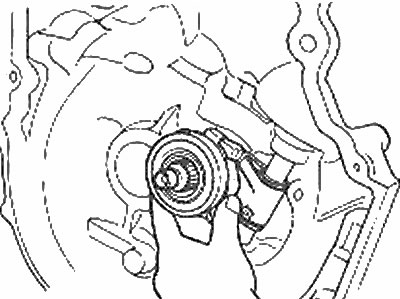
Remove release bearing
8. Remove the bolt of the clutch fork and remove the fork assembly with the lever.
Inspection
9. Remove dust from the clutch housing using an electric vacuum cleaner or a clean cloth. Do not use compressed air for this, as you may inhale dust, which is hazardous to health, because. the dust contains asbestos.
10. Inspect pressure plate for diaphragm spring damage, wear, scratches, and discoloration (indicates overheating) rubbing surface, as well as damage and deformation of the cover. Replace the pressure plate with a new block if there is any doubt about its condition.
11. Inspect the surface of the flywheel for signs of uneven wear, which indicates improper installation or damage to the friction disc springs. Check for burn marks, grooves, cracks or other damage. A flywheel with a large number of chips and grooves must be reground on the machine. Light scratches can be removed from the flywheel surface with fine sandpaper.
12. Inspect the clutch linings for signs of contamination with oil, grease, etc. and replace the disc with a new one if such contamination is found. Check the lining for wear by measuring the distance between the head of the rivet and the face of the lining. Replace the disc with a new one if the pads are worn as shown in the picture.
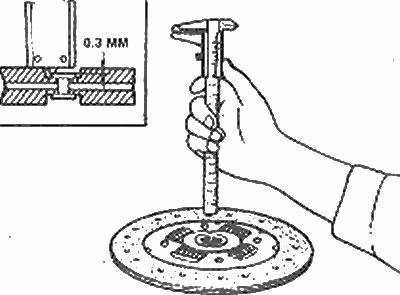
Measure friction lining wear
13. Inspect the disc for warping, wear, broken rivets, weak springs, and damaged slots. Pull the disc onto the input shaft to make sure it is seated correctly and the slots are not damaged or worn. Replace the drive with a new one if there is any doubt about its condition.
14. Check the release bearing for wear and distortion and make sure it rotates smoothly and slides easily against the input shaft. It is recommended that the bearing be replaced every time the clutch is removed, unless the vehicle has traveled very little mileage since the last bearing change.
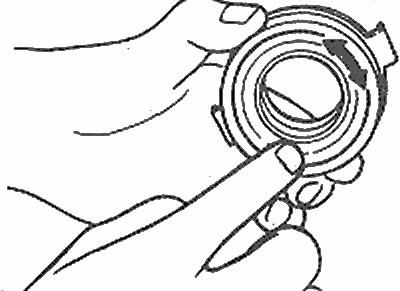
Make sure the bearing rotates smoothly and smoothly | 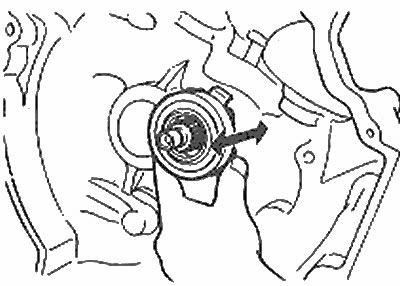
The release bearing must move smoothly in the grooves |
15. Inspect the surface of the clutch housing, release lever and return spring for wear, cracks, deformation and other damage, replace if necessary.
16. Check that the clutch support bearing in the crankshaft rotates smoothly and smoothly (spin it with your finger). Replace the bearing if necessary by removing it with a slide hammer and installing a new one in the crankshaft recess using a socket or piece of tubing and a hammer. Lubricate the new bearing and install it as shown.
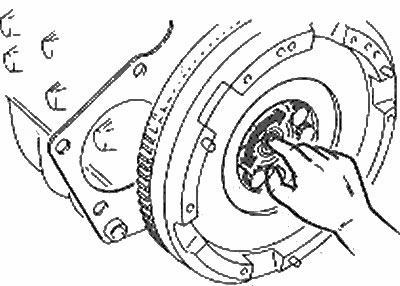
Check support bearing rotation | 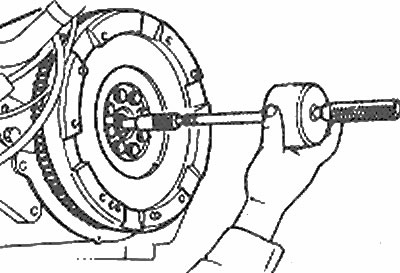
Remove the support bearing with a sliding hammer |
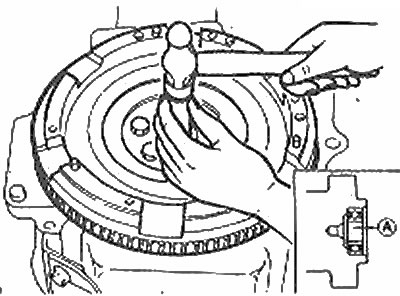
Install the support bearing assembly into the crankshaft recess
A = 2.45±0.3 mm
Installation
17. Apply some molybdenum grease to the release bearing and input shaft/friction plate grooves before installing. Make sure that the grease does not get on the rubbing surfaces of the friction disc, flywheel and pressure plate.
18. Install the friction disc on the flywheel. Hold the friction plate with a special tool or a suitable round rod and install the pressure plate, matching the alignment marks.
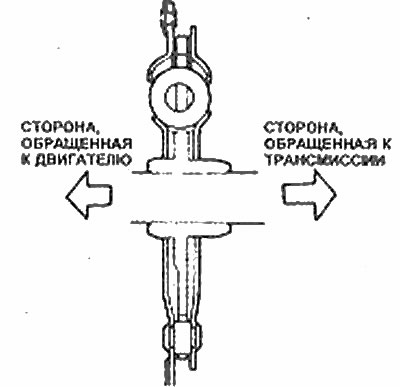
Cross section of friction disc - correct disc orientation shown
19. Install the pressure plate bolts and tighten them in a diagonal sequence so that the pressure plate rests against the friction plate. Center the disc on the clutch support bearing (at the end of the crankshaft), using a special alignment tool or a suitable round rod (photo).
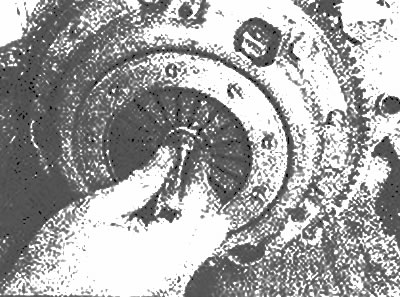
The socket can be used as a clutch centering tool
Note: If the disc is not centered, the transmission will not be able to be installed.
20. Tighten the pressure plate bolts by turning them half a turn in a diagonal sequence with the tightening force specified in the Specifications. Do not remove the centering tool while tightening the bolts.
21. Install release lever, fork, spring and bearing.
22. Remove centering tool and install transmission.
